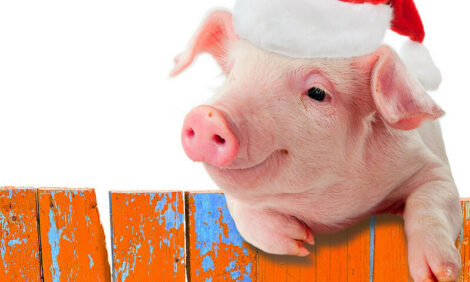



Chief Vet Confirms Need for Modernisation
CHINA - The country's Chief Veterinary Officer has emphasised the tasks on development of the animal husbandry and veterinary services.On 9 April, the first training course for the heads of animal husbandry bureaux of the rotational training programme for the heads of bureaus from major counties in terms of crop production, animal husbandry and fisheries was opened at the branch of the Central Agricultural Officials Education and Training Center at China Agricultural University. Yu Kangzhen, Chief Veterinary Officer of China, attended the opening ceremony and delivered a keynote presentation.
Mr Yu said that accelerating development of modern agriculture and transformation of the pattern of agricultural development was a major task in terms of the work on agriculture and rural economy during the Twelfth Five-Year Plan period. The key to transformation of the pattern of agricultural development was great efforts in development of specialised, standardised, large-scale and intensive agricultural production and operation.
Therefore, he said, it was necessary to give high priority to expansion of standardised large-scale animal farming in the process to transform the development pattern of animal husbandry; work hard at formulation of standards, demonstration, mechanism innovation and publicity; make breakthrough in difficult issues, such as manure disposal, farming records management and biosafety disposal of animals dying of diseases; and effectively strengthen the capacity for market supply of animal products, reduce the incidence of major animal diseases and improve the quality and safety of animal products.
Mr Yu stressed that it was important to intensify the efforts in animal health and veterinary administration during the Twelfth Five-Year Plan period.
He put forward the following priorities:
- first, carry out effective prevention and control of major animal diseases to ensure no reemergence of major animal diseases, effective containment of further spread of zoonoses, timely prevention and control of exotic diseases and decisive response to animal disease emergencies
- second, strengthen the supervision on safety of animals and animal products, especially intensify the disease inspection on farm and at the slaughterhouse to ensure no spread of animal diseases and enhance veterinary drug safety control and residue monitoring to prevent substandard animal products from being marketed, and
- third, facilitate innovation in veterinary systems and mechanisms by improving the systems for veterinary administration, animal health supervision, prevention and control of animal diseases and some other aspects, accelerating development of the system for official veterinarians and licensed veterinarians, implementing the second-phase plan for the animal disease prevention system, and improving animal disease prevention institutions at the township and regional levels this year.







